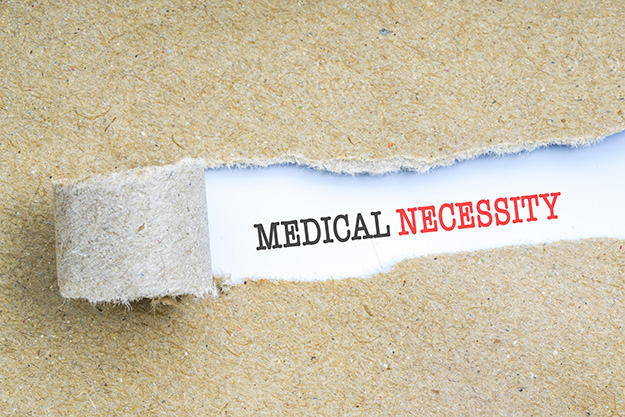
How healthcare providers can avoid getting tripped up by the medical necessity requirement.
The world of medical claims is littered with booby traps that can catch providers off guard. Our law practice has found that healthcare service providers often get tripped up by the concept of medical necessity and lose out on revenue as a result. But you can avoid such missteps, if you know the lay of the land.
Commercial and government health benefit programs pay providers only for covered services that are medically necessary. However, health plans differ when they define “medical necessity.” And when government dollars are spent, the definition can be even narrower. To protect their bottom lines, providers must understand these definitions and document clinical rationales for procedures in their patients’ charts.
Cost is a factor
Cost will always be considered a factor in determining whether a treatment or service is medically necessary. This is true, even if cost is not explicitly stated in the definition. For example, a Virginia regulation requires that a medically necessary “item or service provided for the diagnosis or treatment of a patient’s condition” must be:
- consistent with community standards of medical practice, and
- in accordance with Medicaid policy.
You may rest assured that the Commonwealth of Virginia’s Medicaid policy includes cost limitations.
Consider an even more stringent definition employed by Maryland’s Medicaid program:
The Program covers the following . . . services [that are]:
(1) medically necessary . . .
(a) for the provision of diagnostic, curative, palliative, or rehabilitative treatment; [and]
(b) described in the medical record in sufficient detail to support the invoices submitted for the services.
Fair enough. The services must be clinically necessary and well-documented in the patient’s chart. That’s a given. You would think that would be enough to end the query. But there’s more.
Notably, another regulation ratchets up the reimbursable standard by including three more criteria. To be “medically necessary,” the treatment also needs to be:
(c) consistent with currently accepted standards of good medical practice;
(d) not primarily for the convenience of the consumer [i.e., patient], family, or provider; and,
(e) the most cost efficient service that can be provided without sacrificing effectiveness or access to care.
Subsection (e) appears to require the provider to bear the burden of ensuring cost savings for the payer, while preventing any negative impact to the patient. In other words, the patient won’t get a Cadillac when a Chevy will suffice. See the Chevy Rule.
To ensure that your claim will not be denied due to lack of medical necessity, your clinical chart must clearly document the effectiveness of the patient’s treatment. Keep in mind the rule that “if it isn’t written, then it didn’t happen.” See Documentation article. What’s more, any consensus reached by treating physicians should be noted in the chart. So should the reasons they agree. Otherwise, the health plan may dispute the clinical basis of the proposed or rendered treatment. If you find yourself confronting a payer over denied claims and your documentation is all in order, you will be able to mount a stronger defense for yourself.
The Takeaway
To protect your revenue, prepare in advance by knowing which services your patients’ health plans consider a “medical necessity.” Moreover, the documentation in each patient’s record must clearly explain and substantiate the clinical basis for the level of care and treatment provided to the patient in accordance with the health plan’s definition of “medically necessary.” Follow these recommendations and set yourself up for success in ensuring that claims are paid.
Anderson & Quinn, LLC is a law firm based in Rockville, Maryland, providing individuals, businesses, corporations, and healthcare institutions with the legal and litigation support they need.
